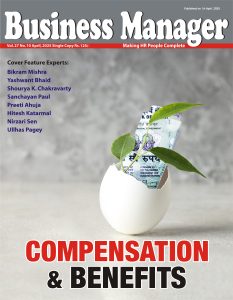In the era of artificial intelligence, the hushed conversations surrounding menstruation persist, casting a shadow over a natural biological process. While nations like Japan, Taiwan, and South Korea have embraced progressive menstrual leave policies, India grapples with outdated beliefs and a pervasive lack of awareness. It then turns its focus to India, urging women in corporate settings to advocate for their rights and shatter the silence surrounding menstruation. By drawing parallels with developed nations and emphasizing the imperative for policy change, this piece aims to spark a movement towards achieving menstrual equity for Indian women.
The Global Landscape:
A growing momentum surrounds the global conversation on menstrual leave, with countries like Japan, Indonesia, Taiwan, and South Korea implementing formal policies that grant women paid time off during their periods. These policies recognize the physical and emotional challenges associated with menstruation, contributing to improved workplace well-being, reduced absenteeism, and a more inclusive environment.
Stigma in the Era of AI:
In an ironic twist, traditional taboos surrounding menstruation persist even as artificial intelligence reshapes our world. In India, menstruation remains entwined with shame and impurity, resulting in social exclusion and inadequate access to menstrual hygiene products. This stigma has far-reaching consequences, hindering girls’ education and limiting their participation in public life.
Also read: Abhik Bhattacharyya joins UNIVO Education as CHRO
A Call to Action for Indian Women:
Corporate women in India possess a unique opportunity to spearhead the menstrual leave movement in their country. By sharing their personal experiences and advocating for change, they can pave the way for a more empowered and productive workforce. Drawing inspiration from developed nations and leveraging the power of social media, they can initiate a movement that challenges existing norms and fosters open dialogue about menstruation.
Why Indian Women Deserve It:
Acknowledging menstruation as a legitimate health concern with the potential to impact work performance is not a privilege but a fundamental right. Embracing menstrual leave policies aligns with India’s commitment to gender equality and women’s empowerment, ensuring that Indian women enjoy the same rights and dignity as their counterparts worldwide.
Beyond Menstrual Leave:
The call for menstrual leave is just one facet of the broader push for menstrual equity in India. Alongside policy changes, there is a pressing need for widespread awareness campaigns, improved access to hygiene products, and comprehensive sex education to break the cycle of stigma and shame.
Insights into Global Menstrual Leave Policies:
- Japan: Since 1947, Japan’s Labor Standards Act permits women to take paid leave during menstruation if it hinders their work performance.
- Taiwan: Implemented in 2016, Taiwan’s policy grants women up to three days of paid leave per year without a doctor’s note.
- South Korea: Enacted in 2009, South Korea allows women to take up to one day of paid menstrual leave per month, though utilization remains low due to stigma.
Global Statistics:
A 2020 International Labour Organization (ILO) study found that menstrual leave policies are in place in at least 20 countries globally.
A 2023 Plan International survey revealed that 78% of women globally support menstrual leave policies.
Benefits of Menstrual Leave:
- Reduced absenteeism: Studies show that menstrual leave policies decrease absenteeism due to menstrual symptoms.
- Improved morale and productivity: Supportive workplaces foster higher productivity and engagement among women.
- Increased gender equality: Menstrual leave policies contribute to a more equitable workplace by acknowledging the impact of menstruation on women’s work lives.
Challenges and Stigma:
Despite the increasing number of countries with menstrual leave policies, concerns about stigma and potential job discrimination persist. Education and awareness campaigns, coupled with robust anti-discrimination policies, can address these concerns.
Conclusion:
By illuminating the data and benefits of menstrual leave policies, we can move beyond stigma and encourage more countries and workplaces to thoughtfully implement these policies.
Stay connected with us on social media platform for instant update click here to join our LinkedIn, Twitter & Facebook






















